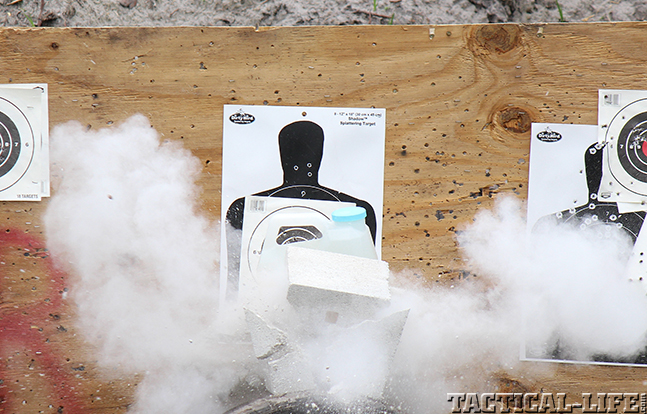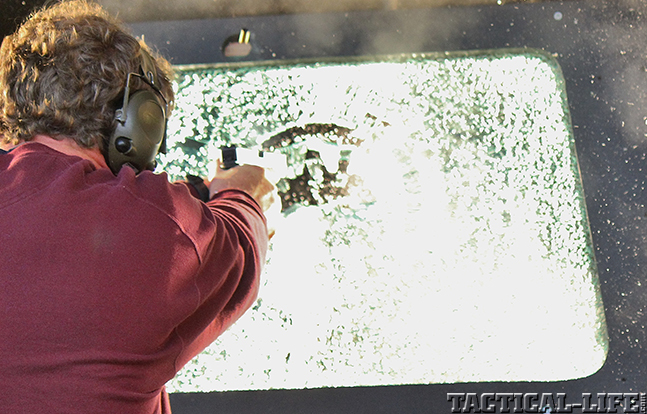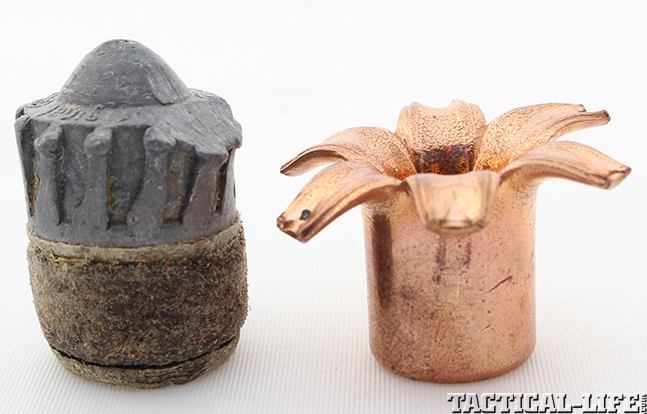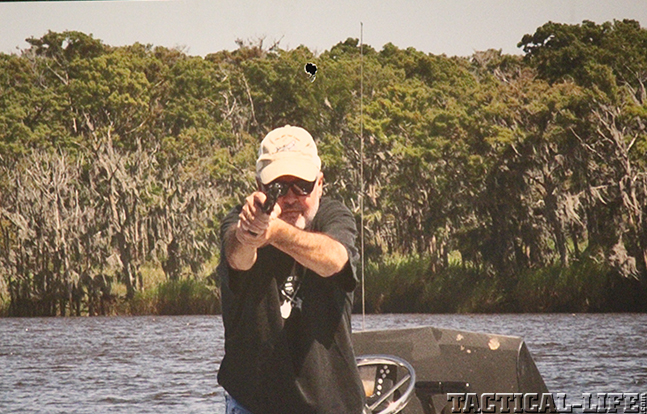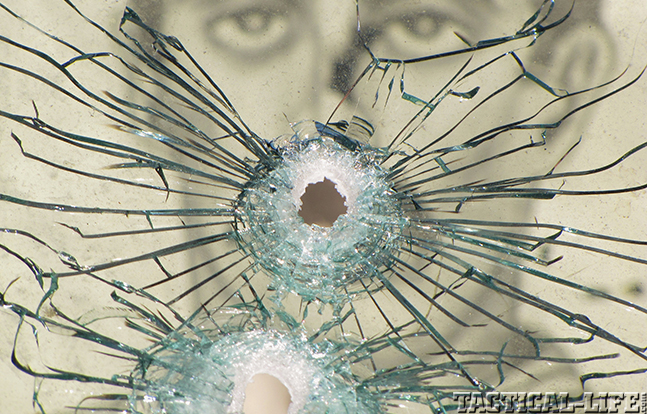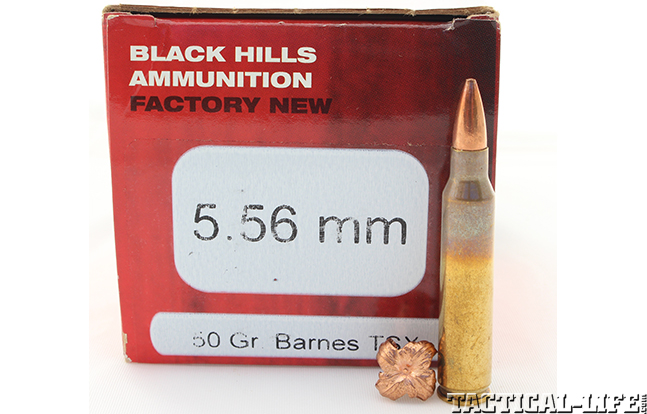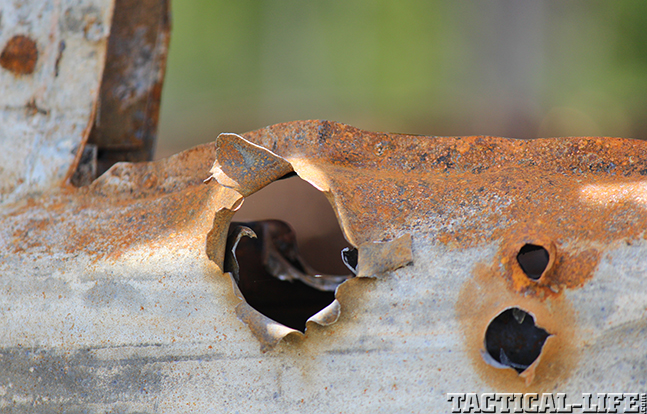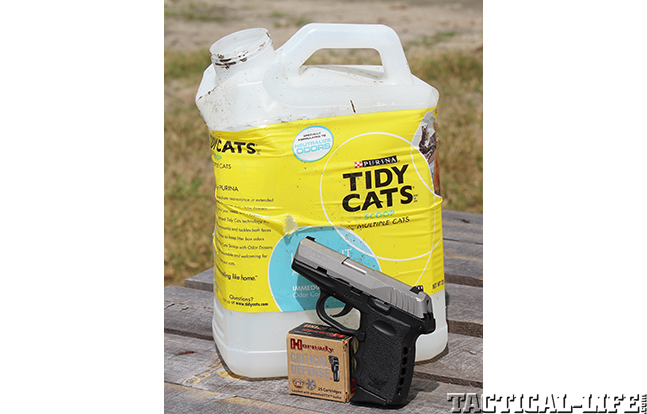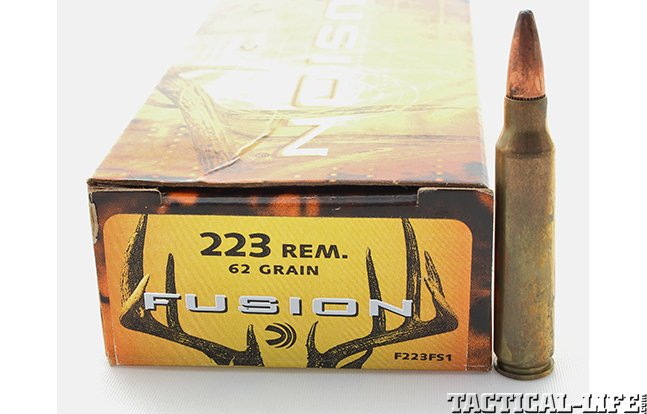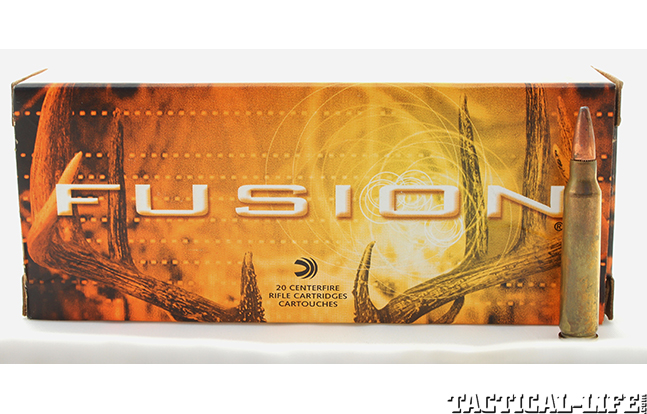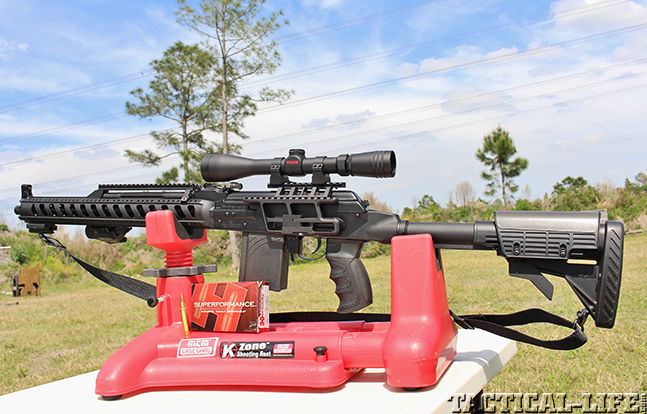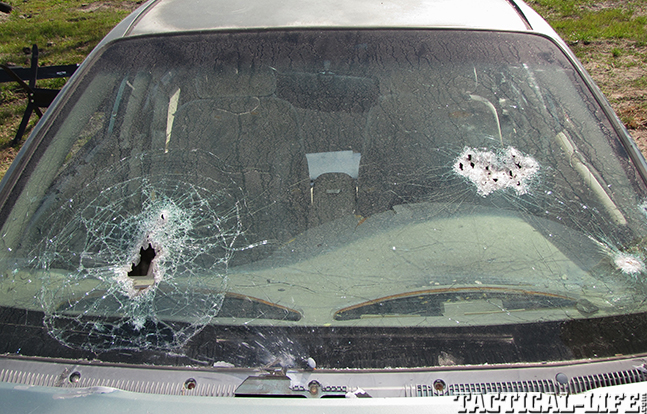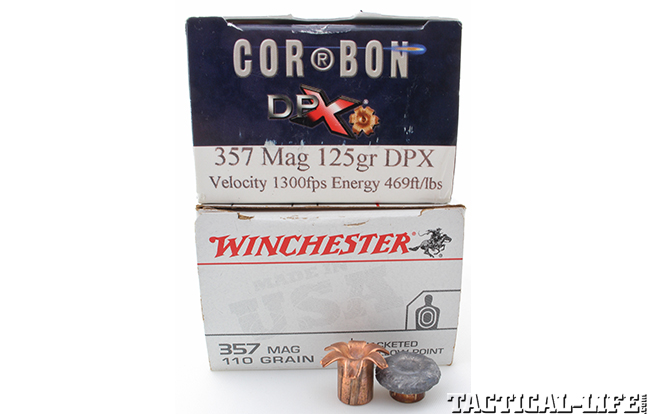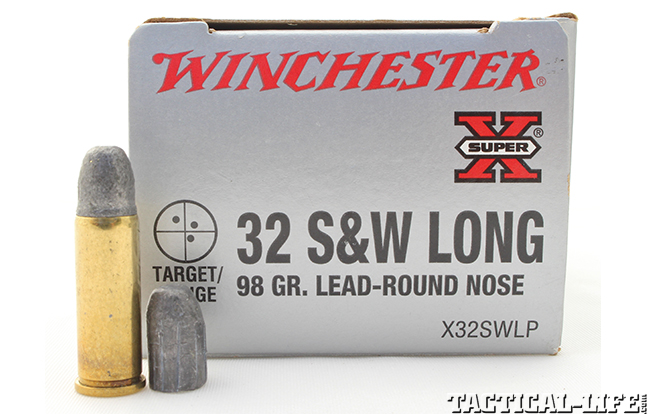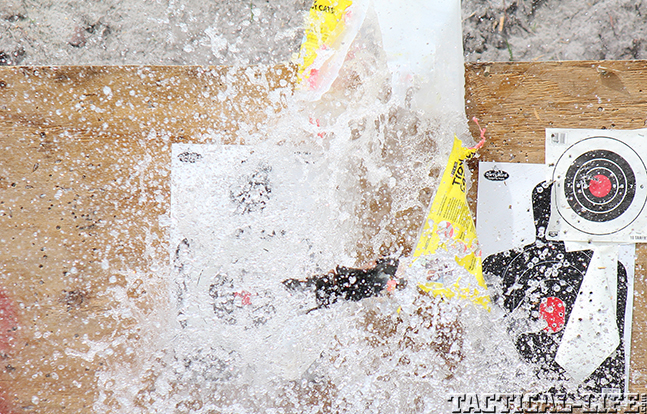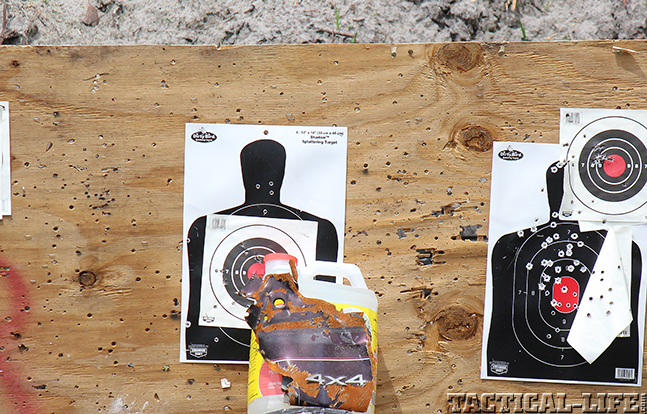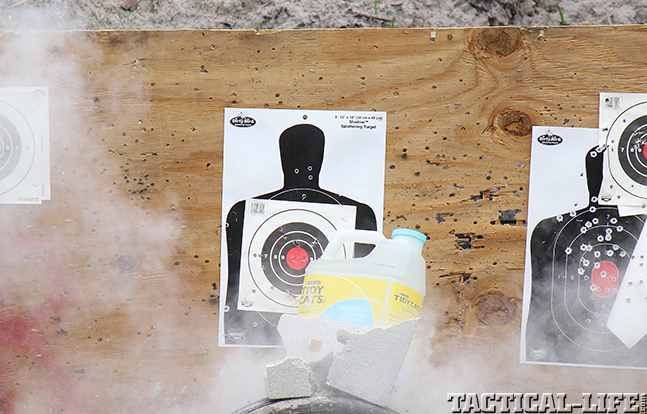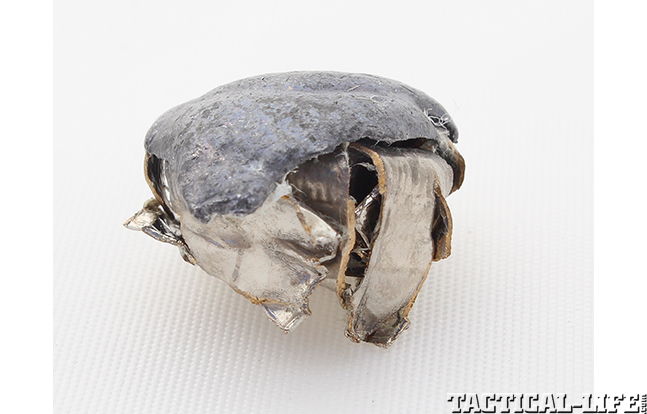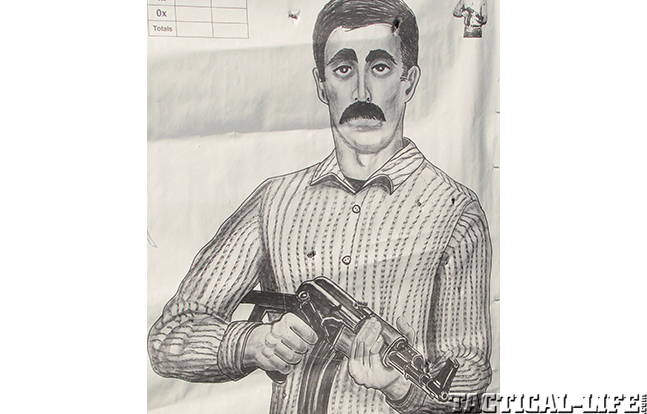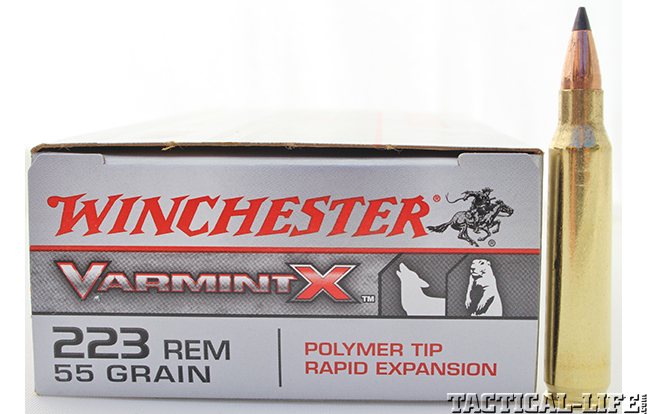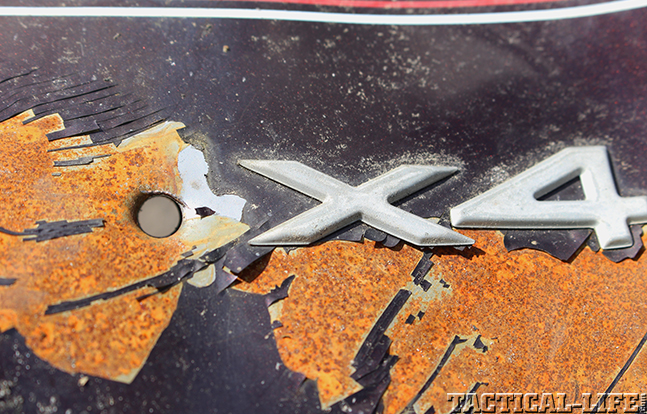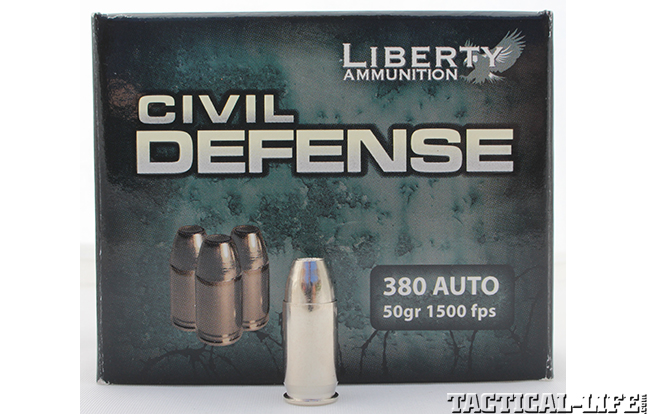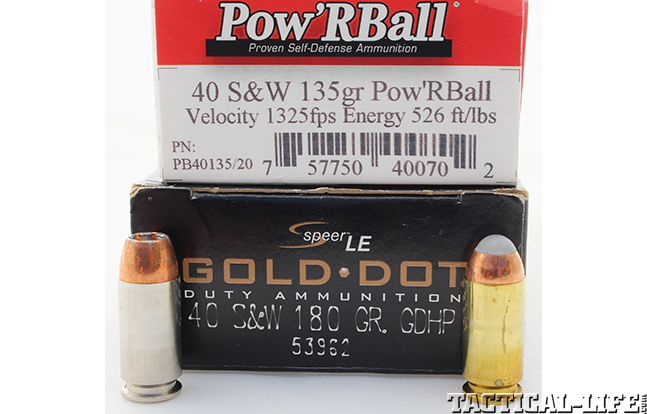Gunfights don’t always take place in the open. When an assailant attacks from behind light or medium cover, lightweight hollow points designed for rapid expansion and limited tissue penetration may break up before they reach their target. Therefore, the ability to continue fighting when an assailant shoots from cover is an important consideration when selecting ammunition.
Cover is any barrier material that will significantly slow, deflect, fragment or stop a bullet before it reaches its intended target. Cover doesn’t have to totally stop a bullet to be effective. It just has to slow or deflect the round sufficiently to prevent it from neutralizing its intended target. There are many kinds of cover. Some, like refrigerators and mailboxes, offer both concealment and protection from bullets. Others, like car windshields or bullet-resistant glass, don’t offer concealment, yet they often deflect and fragment bullets. Complex cover is made of several components, each of which places different stresses on a projectile. Refrigerators and automobile windshield safety glass are good examples of complex cover made of layers of different materials. Complex cover can also be granular in structure. The small, hard granules of cinder blocks frequently grind bullets into small pieces before they reach their targets.
Some calibers and bullet types are more effective against cover than others. Generally, larger-caliber projectiles that have high sectional densities are better at defeating cover, especially if they are of bonded or monolithic construction. In addition, bullets made of harder metals than pure soft lead also do a better job of penetrating cover. These metals include lead/tin alloys, copper, bronze and steel. Some examples of cover-defeating bullets include 12 gauge (1) DDupleks steel Monolit 32 slugs and (2) 12 gauge Brenneke hard-cast slugs for shotguns, and handgun loads with bonded or “X” bullets. Cover-defeating rifle loads have bullets with steel jackets or penetrators, or they can have X-type or bonded bullets. Just remember, no bullet will defeat every type of cover.
Advertisement — Continue Reading Below
On the other hand, cover-defeating bullets aren’t good for all situations. Almost all projectiles fired from guns will penetrate light materials like drywall. Therefore, using large-caliber, high-sectional-density and/or hardened projectiles for urban self-defense runs the risk of collateral damage to both bystanders and property due to overpenetration and ricochet. Since most of us live in cities, this creates a real dilemma when it comes to choosing ammo. How can one simultaneously limit collateral damage and still have at least limited defense against assailants who shoot from light or medium cover? There are two solutions. Neither is perfect, but both are better than making an uninformed choice.
Ballistic Balance
The first solution is to use a single load that offers terminal ballistic balance. The strong point of this strategy is that you don’t have to manage two different loads in the field. The weak point is that no one load does everything well. Loads with terminal ballistic balance have bullets that rapidly expand and limit the risk of a through-and-through shot when fired into tissue, yet their projectiles still hold together well enough to penetrate most light to medium cover.
Advertisement — Continue Reading Below
Handgun loads offering terminal ballistic balance generally include ammo topped with expanding bullets of low to medium sectional densities. Examples include the light-for-caliber bullets loaded in the following types of ammunition: (3) Speer Gold Dot, (4) CorBon DPX, (5) Barnes TAC-X, (6) Federal HST, (7) Federal Tactical Bonded, (8) Hornady Critical Defense, (9) Winchester PDX and (10) Remington Ultimate Defense.
The situation is quite different with shotguns and centerfire rifles. It’s difficult to achieve terminal ballistic balance with ammunition for long guns because most of their cartridges generate a great deal of kinetic energy. Rifle bullets and shotgun projectiles designed for controlled tissue penetration will often fragment and fail to penetrate medium cover like automobile safety glass. This is especially true of the more powerful medium- and large-bore rifles and shotguns. So, with rifles and shotguns and some big-bore magnum handguns, a different solution often needs to be found.
Using Two Loads
Advertisement — Continue Reading Below
The other strategy for dealing with assailants who shoot from cover is to use two loads, one with controlled tissue penetration to limit collateral damage and one that defeats barriers. The strong point of this strategy is that you can tailor your ammunition to the types of threat you anticipate. The weak point is that you’d better be right about anticipating the threat, because if you have low-penetration ammo in the gun and an assailant takes cover, it’s going to take precious time to switch ammo. In addition, the gun must be sighted with both loads to assure similar points of impact.
Handgun loads that offer limited penetration are often topped with low-sectional-density jacketed hollow points of cup and core construction like (11) Winchester’s Silvertips, some of (12) Remington’s semi-jacketed hollow points, many of (13) Federal’s JHPs and most of (14) CorBon’s JHPs. Some of the newer fragmenting monolithic bullets, such as those used in (15) Liberty Civil Defense ammunition, also offer highly controlled penetration. In addition, pre-fragmented bullets ((16) Glaser Safety Slugs) and compressed metal bullets ((17) Sinterfire hollow points) limit the threat to bystanders from a shoot-through.
When it comes to choosing a second handgun load, there are a number that do a good job of penetrating light and medium cover. These include loads with solid-copper “X” bullets, (18) Hornady Critical Duty Flex Tip bullets and heavy-for-caliber versions of the (3) Speer Gold Dot, (6) Federal HST, (7) Federal Tactical Bonded, (9) Winchester PDX and (19) Remington Golden Saber.
Advertisement — Continue Reading Below
Shotgun loads offering reduced tissue penetration contain shot ranging from #2 birdshot to #1 buckshot. They also include (20) Winchester’s 20 and (21) 12 gauge PDX segmented slugs and (22) Winchester’s .410 PDX shells loaded with a combination of lead disks and birdshot.
Most shotgun slugs offer moderate to high penetration against a broad variety of cover. The harder the slug, the deeper it penetrates. Those at the high end of penetration include original Brennekes, bonded expanding slugs and pure-copper expanding slugs.
Rifle loads offering reduced risk of penetrating through the target generally contain low-sectional-density bullets designed to rapidly expand or tumble. Both types of bullets fragment when they impact tissue and rarely exit the target intact, if at all. Examples include many spitzer-type FMJ bullets that tumble and fragment and most .224 to .308 caliber “varmint” bullets loaded by most American ammunition manufacturers.
Advertisement — Continue Reading Below
Cover-defeating rifle loads generally have high-sectional-density bullets with the one or more of the following characteristics: monolithic hardened-metal construction, bonded cores, steel jackets and/or steel penetrators. Ammunition that meets these requirements would include loads with (23) Barnes “X” bullets from CorBon, (24) Federal Black Hills and (25) Barnes as well as loads using Nosler’s E-Tip or (26) Hornady’s GMX bullets. It would also include ammunition with bonded bullets like (27) Nosler’s AccuBond, (28) Hornady’s Inter-Bond, (29) Remington ammunition with bonded bullets and (30) Federal’s Tactical, (31) Trophy Bonded Tip and (32) Fusion bullets. A variety of military loads with steel jackets or steel penetrators would also be included.
There are no guarantees that expanding bullets will always expand and penetrating bullets will always penetrate. Even so, selecting ammunition according to a strategy that weighs the need to limit collateral damage against the need to defeat cover can help stack the odds in your favor.
